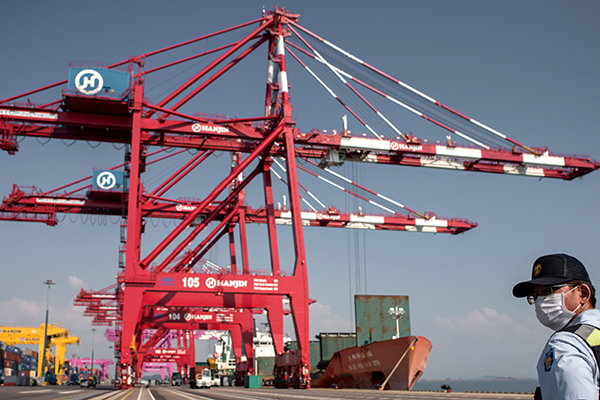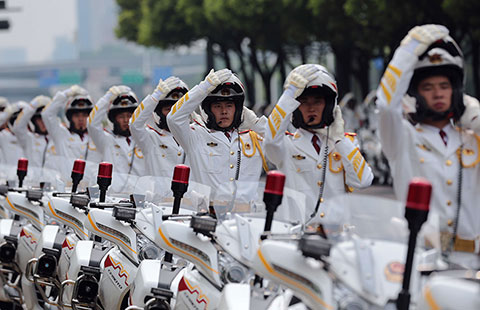Retailers scramble as shipper fails
(China Daily) Updated: 2016-09-06 07:43
 |
|
A security guard standing at a dock at the Hanjin Incheon Container Terminal in Seoul, South Korea. [Photo/Agencies] |
Some major retailers are scrambling to work out contingency plans to get their merchandise to stores as the bankruptcy of the Hanjin shipping line has thrown ports and retailers around the world into confusion.
They don't have a lot of time. Giant container ships from the South Korean-based Hanjin shipping line are marooned with their cargo of what experts say are lots of TVs and printers, but also loads of home furnishings and clothing.
Hanjin, the world's seventh-largest container shipper, filed for bankruptcy protection Wednesday and stopped accepting new cargo. With its assets being frozen, ships from China to Canada were refused permission to offload or take aboard containers because there were no guarantees that tugboat pilots or stevedores would be paid. It's also been a factor in shipping rates rising and could hurt some trucking firms with contracts to pick up goods from Hanjin ships.
The South Korean giant represents nearly 8 percent of the trans-Pacific trade volume for the US market. While some retailers may already have merchandise for the holiday season affected, experts say what's most important is that the issue be resolved before the critical shipping month of October.
"Retailers always have robust contingency plans, but this degree of uncertainty is making it challenging to put those plans in place," said Jessica Dankert, senior director of retail operations for the Retail Industry Leaders Association, a trade alliance with members including companies like Best Buy, Wal-Mart and Target.
J.C. Penney said Hanjin is one of several ocean freight carriers that it uses and when it learned there might be an issue it began to divert and reroute its containers. It said it uses "a variety of transportation methods and ports" and right now does not expect a significant effect on the flow of merchandise.
Associated Press
- Tech tycoons support Xi's innovation vision
- iFLYTEK to boost AI investments
- Scholars, business leaders dissect Xi's speeches
- Alibaba chief sees tasty opportunities in fast food
- German expert: Infrastructure key for growth
- Technology advances leave stamp on G20
- High-level guests head out on town for some shopping
- Hangzhou may be impetus for sustainable development

















